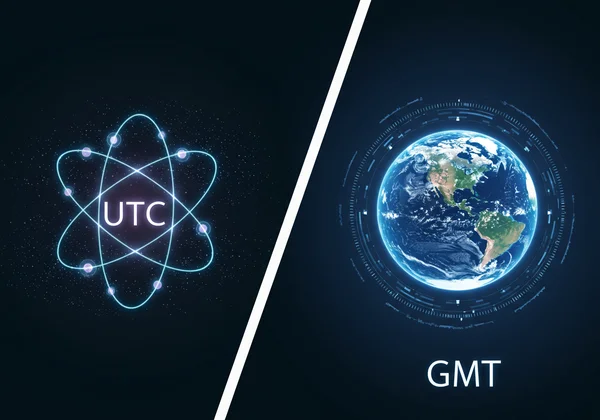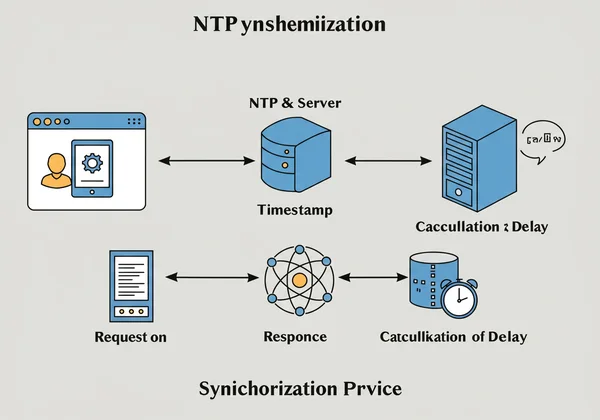Atomic Precision: How Our Online Digital Clock Uses NTP, UTC & GMT
When you need truly precise time, not all online clocks are created equal. Behind the accuracy you rely on, a complex dance of global standards and network protocols is at play. Ever wondered just how accurate an online digital clock can be? The secret lies in the technology. We'll explore the science powering unparalleled precision, from the fundamental time standards of UTC and GMT to the critical role of the Network Time Protocol (NTP).
At its core, a clock is only as good as the standard it's set to. For professionals managing global projects, academics conducting timed exams, or anyone who values precision, "close enough" isn't good enough. You need a realtime clock you can trust implicitly. We will explore how we achieve this level of reliability, giving you the confidence that the time you see is the time it truly is. Discover its precision for yourself and see the difference technology makes.
Decoding Global Time Standards: UTC vs. GMT Explained
To understand time synchronization, we first need a universal reference point. For decades, two acronyms have dominated the conversation: GMT and UTC. While often used interchangeably, they represent different concepts crucial to how an accurate clock functions. Understanding their distinction is the first step in appreciating the science of precision timekeeping.
What is Coordinated Universal Time (UTC)?
Coordinated Universal Time (UTC) is the modern global time standard. It is not a time zone but a successor to GMT, meticulously maintained by a global network of atomic clocks. These are the most precise timekeeping devices known to humanity, measuring time based on the resonant frequency of atoms. UTC is the "master clock" for the entire world, providing the stable and consistent baseline that powers everything from international flight schedules to the internet itself. When a tool claims to use an atomic clock, it means it's referencing the UTC standard.
Understanding Greenwich Mean Time (GMT)
Greenwich Mean Time (GMT) is a historical time standard and is now officially a time zone. Originally, it was based on the mean solar time at the Royal Observatory in Greenwich, London. It served as the world's primary time reference for much of the 19th and 20th centuries. However, because it's based on the Earth's rotation—which has minor, unpredictable variations—it lacks the nanosecond precision of UTC. Today, GMT is primarily used as the local time zone for the UK in winter and several other countries.
Key Differences and Practical Implications for Online Clocks
The key difference is their source of truth: UTC is based on hyper-accurate atomic clocks, while GMT is based on the Earth's less-perfect rotation. For an online digital clock, this distinction is paramount. A clock referencing GMT might be sufficient for casual use, but it isn't the pinnacle of precision. For applications requiring synchronization across the globe, such as a world time zone clock, UTC is the only acceptable standard. It ensures that every team member, regardless of location, is operating on the exact same, universally agreed-upon time, eliminating costly errors caused by timing discrepancies.

The Science of Sync: How NTP Ensures Atomic Accuracy
Knowing the correct time (UTC) is only half the battle. The next challenge is delivering that precise time to your screen over the internet, a network filled with delays and inconsistencies. This is where the magic of the Network Time Protocol (NTP) comes in. It is the invisible engine that turns a standard digital display into a truly accurate clock.
What is Network Time Protocol (NTP) and Why Is It Essential?
Network Time Protocol (NTP) is a foundational internet protocol designed specifically to synchronize the clocks of computers over a network. Its job is to constantly correct for the inherent delays (latency) in data transmission. Without NTP, the time displayed on your screen would simply be your computer's local system time, which can drift and become inaccurate by several seconds or even minutes over time. NTP ensures that your device's clock is continuously and automatically adjusted to match the UTC standard with incredible precision, often within a few milliseconds.
The Journey to Precision: How NTP Synchronizes Your Digital Clock
How does an online clock sync with atomic time? The process involves a sophisticated, elegant exchange of information. When you visit our precise online clock, an NTP-powered system performs a series of steps in the background:
-
Request: Your browser sends a time request to a network of NTP servers. These servers are directly connected to atomic clocks.
-
Timestamp: The NTP server receives the request and timestamps it with the exact UTC time.
-
Response: The server sends this timestamped information back to your browser.
-
Calculation: The system on your end receives the response. It intelligently calculates the round-trip network delay—the time it took for the data to travel from you to the server and back.
-
Synchronization: By accounting for this network latency, it adjusts your displayed time to accurately reflect the true UTC time. This process repeats continuously to correct for any new delays or clock drift.

Our Unwavering Commitment to NTP-Driven Precision
Our commitment is to provide more than just a convenient online tool; we aim to deliver an instrument of precision. We have built our realtime clock on a foundation of NTP synchronization. This means the time you see on our homepage is not an estimate or your device's local time. It is a live, continuously corrected time signal derived directly from the world's most accurate atomic time sources. This dedication is why professionals who demand reliability can experience accurate time with us.
The Value of Precision: Why Atomic Time Matters for You
You might wonder if millisecond accuracy truly matters in your daily life. For many activities, it is absolutely essential. The reliability provided by an NTP-synced atomic clock has tangible benefits, whether you are a project manager, an educator, a developer, or simply someone who appreciates efficiency and accuracy.
Beyond the Screen: Real-World Impacts of Accurate Time
For a global project manager like Elena, coordinating a meeting between San Francisco, Berlin, and Singapore requires everyone to be perfectly in sync. An inaccurate clock can lead to missed calls and project delays. For a professor like Thompson, starting and ending an exam with a precise clock with seconds ensures fairness for all students. For a developer, synchronizing logs across multiple servers is impossible without a common, precise time reference. In each case, accuracy is not a luxury but a necessity for professional integrity and operational success.

Local System Time vs. NTP: Why True Sync is Superior
What is the difference between NTP and local system time? Your computer's internal clock is managed by a small quartz crystal. While reliable for everyday tasks, it is susceptible to "clock drift" due to temperature changes and manufacturing imperfections. Over weeks or months, it can become significantly inaccurate. NTP, on the other hand, doesn't rely on this fallible hardware. It provides an external, authoritative source of truth, constantly correcting any drift and ensuring your clock remains perfectly aligned with the global standard. True synchronization is always superior to isolated, local timekeeping.
Experience Our Reliable, Realtime Online Clock
We've harnessed the power of UTC and NTP to create a tool that is not only precise but also versatile. Whether you need a large, clear fullscreen digital clock for a presentation, a customizable clock to match your desktop aesthetic, or a quick way to switch between a 12hour 24hour clock, our tool is designed for your needs. We invite you to check the time now and see how a commitment to precision engineering creates a better user experience.
Your Time, Precisely Controlled
From the universal authority of Coordinated Universal Time (UTC) to the brilliant synchronization power of the Network Time Protocol (NTP), the science behind modern timekeeping is a testament to human ingenuity. Understanding these principles reveals why not all online clocks are created equal. Precision is not an accident; it is the result of a deliberate commitment to using the best standards and technologies available.
Our platform is built on these foundational principles, ensuring you always have the most accurate, reliable, and functional time at your fingertips. Ready to experience time with unwavering precision and control? We invite you to visit DigitalClock.org, explore its powerful features, and see how our customizable clock can enhance your work or daily life!
Frequently Asked Questions About Online Clock Accuracy
How accurate is an online digital clock?
The accuracy of an online digital clock depends entirely on its technology. Clocks that merely display your computer's local time can be inaccurate due to clock drift. However, an advanced clock that uses Network Time Protocol (NTP) to sync with atomic time servers, like ours, can achieve accuracy within a few milliseconds of the official UTC time.
What is the most accurate online clock?
The most accurate clock online is one that leverages NTP to synchronize with a network of stratum-1 atomic clock servers. These tools actively correct for network delays to provide a time signal that is a true reflection of UTC. Our accurate online clock is designed on this principle to offer users a highly accurate and reliable timekeeping experience.
How does an online clock sync with atomic time?
An online clock syncs with atomic time through a protocol like NTP. It sends a request to a server connected to an atomic clock, receives a timestamped response, calculates the network travel time, and adjusts the displayed time to compensate for that delay. This continuous correction ensures the time remains precise.
What is the difference between NTP and local system time?
Local system time is the time kept by your computer's internal hardware clock, which can drift and become inaccurate over time. NTP-synchronized time, in contrast, is actively and continuously corrected against the global UTC standard via the internet. This makes the time provided by our free online clock far more reliable and precise than your system's default time.